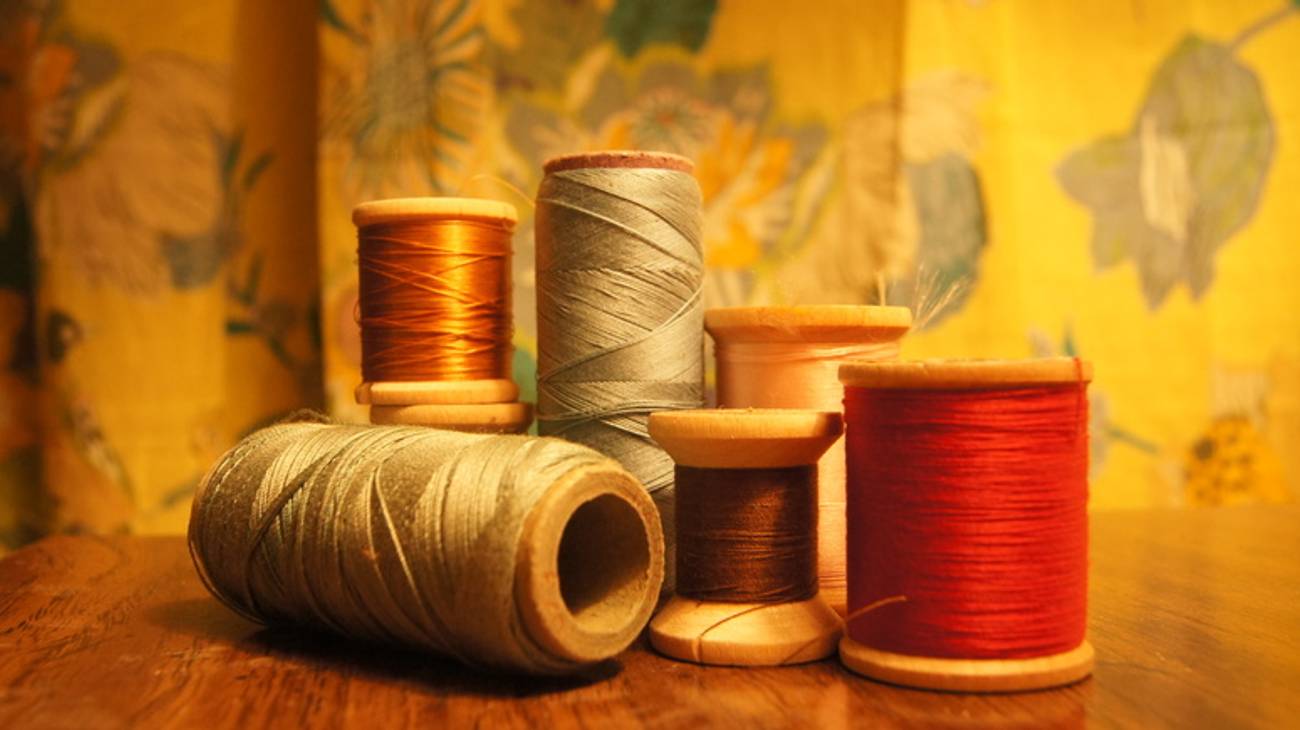The Fabric of Sisterhood
These storied Jewish women’s groups, long in decline in most synagogues, have a history that goes far beyond sponsoring a kiddush—a history that illustrates the power of a needle and thread




I’m all thumbs with a needle and thread, don’t care for chitchat, and am not much of a joiner. Had I grown up in the late 19th and early 20th centuries, when belonging to a synagogue or a temple sisterhood was the thing to do among middle-class American Jewish women, I would have been at a considerable disadvantage: on the outside, looking in.
By the time I came of age, however, the synagogue sisterhood was on its last legs, the shrinking preserve of an aging cohort of women with time on their hands. No one I knew, not even my mother, belonged to one.
These days, sewing circles, and crafting more generally, enjoy something of a renaissance, as Jodi Eichler-Levine’s recent book, Painted Pomegranates and Needlepoint Rabbis—a contemporary portrait of Jewish women who gather in a Jewish space of their own devising to sew, knit, purl, and crochet—vividly demonstrates. The synagogue sisterhood, though, does not appear to have benefited from this boomlet.
Some remain active, like the Beth Meyer Sisterhood of Raleigh, North Carolina, which brings together women “of all ages and backgrounds to share in fun, exciting, and spiritually-inspired events,” or the sisterhood of Congregation Kehilath Jeshurun in Manhattan, a “home within a home” for the synagogue’s female members. Yet, when compared with how widespread, influential, and even formidable a force it had once been, the synagogue sisterhood is a shadow of its former self.
As a consequence of sweeping changes at home and in the workplace, as well as the professionalization of social work, voluntarism fell out of favor. Before it lost its luster, American Jewish women “dowered with leisure” made a point of belonging to and participating in ventures to “brace up” co-religionists in need.
From their inception in the early-to-mid-19th century as benevolent societies and “Hebrew ladies’ sewing circles” to their reincarnation many decades later as Sisterhoods of Personal Service, Jewish women’s groups were often the first port of call for those in distress. At a time when the urban social fabric was rent with many holes—illness, economic uncertainty, widowhood, the dislocations of immigration—while the existence of social welfare systems was a gleam in no one’s eye, the ladies of the synagogue sisterhood were at the ready.
Nothing if not “energetic,” they distributed a range of goods throughout the year, from hundreds of tons of coal in winter to hundreds of pounds of sugar come Passover; saw to it that young children were kept off the street by setting up neighborhood kindergartens; offered cooking classes, maintained an employment bureau, and sewed up a storm—sheets and pillow cases, undergarments, shirts, dresses, children’s clothing. Their steady output prompted one late-19th-century champion to characterize sisterhood members as “lady-knights of the needle,” and another to define their efforts on behalf of the poor as “coming to their rescue.”
Mindful at times of the limitations of beneficence, of the bestowal of charitable gifts rather than the provision of services, Sisterhoods of Personal Service also sought to enable the objects of their largesse to stand on their own two feet by sponsoring sewing classes. At once a form of vocational training and an exercise in deportment, instruction in this area made it possible for the down-and-out to experience the “thrill of self-respect which comes from wearing new garments.”
In taking up sewing as a remedial communal venture, the members of the synagogue sisterhood drew on ample precedent. Both free-standing and church-affiliated sewing circles went way back in American history, so much so that by the early 19th century, they were just about everywhere. “The plough is hardly a more blessed instrument in America than the needle,” observed Frances Trollope as she traveled across the country in the 1820s and 1830s. “How could they live without it?” Within the compass of their sewing circles, women spun wool into cloth at a time when British imports were no longer available; clothed the soldiers of the Revolutionary Army; furnished the poor with bedding, and provided fugitive slaves, easily recognizable by their ill-fitting, coarse, and “shoddy” garb, with decent dress so that they might elude their pursuers.
Synagogue sisterhoods were no different. For much of their history, sewing was a key component of their efforts at amelioration, perhaps even their beating heart. But until quite recently few professional historians noticed: They were more inclined to relegate needle, thread, and fabric to the domestic domain than to account for its steady presence in the public sphere. Mea culpa: I, too, am guilty of that myopic practice. When, many years ago, I first set my sights on and explored the history of the synagogue sisterhood, I duly noted the robust presence of sewing-related activities in sisterhoods across the country, but didn’t go much beyond listing them. I now know better. Having been increasingly alerted over the years to the profound cultural significance of making things by hand, I’ve come to see sewing as a project rather than a pursuit.
When redefined as a duty, not just a hobby or a prerequisite of respectable womanhood, facility with a needle and thread not only brought Jewish women together to do good. It also affirmed their belief in the possibility of putting the House of Israel, along with their own, in order. As the Jewish Messenger noted in 1894, the needy were not the only ones to have benefited from “sisterly participation in good work … The ‘sisters’ themselves have felt the effect of doing good themselves.”
A win-win situation. Perhaps the time is right to revisit and reinstate the synagogue sisterhood?
Jenna Weissman Joselit, the Charles E. Smith Professor of Judaic Studies & Professor of History at the George Washington University, is currently at work on a biography of Mordecai M. Kaplan.